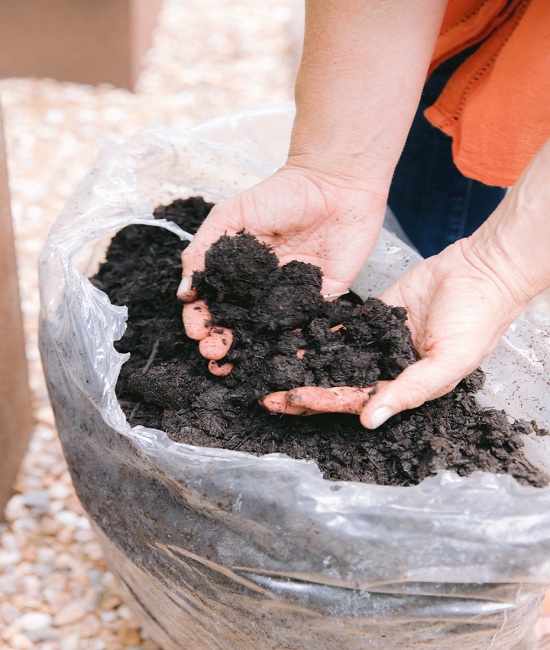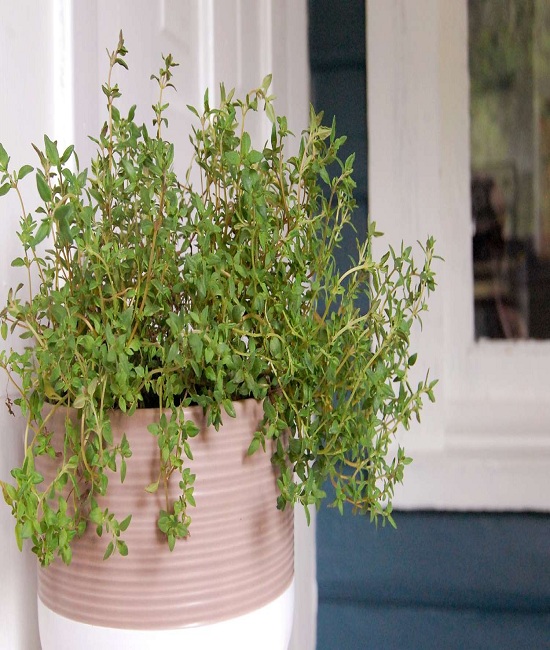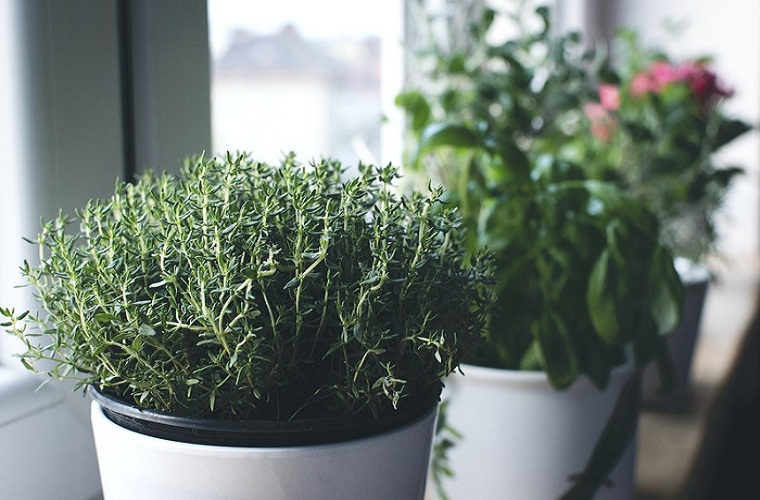You may keep gardening even in the dead of winter if you start your herb plants indoors. At the same time, it adds a wonderful, crisp taste to soups, salads, and other foods.
Best of all, you don’t need a lot of room or expensive tools to accomplish this. To get started, really all you need is some decent soil and a sunny windowsill.
In this article, we’ll take a look at how to start your very own indoor herb garden, and we’ll also recommend five excellent herbs for you to try growing in your home.
How To Grow Herbs Indoors?
There are three main criteria that will determine how successful your herb garden will be. Proper indoor growing conditions include having adequate lighting, utilizing a good soil, and choosing the proper herbs.
- When it comes to soil, regular garden soil is just too heavy for herbs to live and grow indoors. Choose a lightweight, nutrient-rich potting soil or seed starting soil of good quality.
- For the pot size, although 4” pots will do, 6” pots are preferable. They take up little room but permit a sufficient quantity of soil for plant nourishment.
- For lighting, choose a sunny window in a warm room. If you want lots of natural light, pick a window that faces south.
And as for the best herbs to cultivate inside, here are five of our favorites:

Oregano
Growing oregano from a cutting or a seed indoors is simple. If you put this perennial in a warm, sunny window, it will quickly multiply.
Growing oregano well demands rich soil, so repotting it into a larger container will ensure that it has enough room to spread its roots and survive the winter.
Plant 6-8 seeds 1/4 inch deep in each 6 inch pot if starting from direct seed. You should trim the seedlings to a density of 3–4 plants per square foot as they emerge. Strong early growth in oregano can be achieved by amending the soil with compost or worm castings.
Water well, but leave the soil to dry out in between waterings to keep the roots from rotting away. If the plant’s growth becomes unmanageable, you can cut it to encourage denser foliage.
Oregano also dries well and is great for using to produce your own home-made Italian seasoning. Combine a handful of each of the following dry herbs in a bowl: parsley, oregano, basil, thyme, and rosemary.

Chives
Chives are a very small onion relative, but their flavor is huge. They are very simple to cultivate in a controlled environment like a home.
They can be started from seeds, but establishing them from transplants is much simpler. The simplest way to get your outdoor-grown chives indoors is to transplant a small cutting into a pot filled with new potting soil.
Plant twenty to thirty seeds evenly across the top of a six-inch pot if growing from seed. Then, add another 14 inch of potting soil on top and mist softly. Keep the soil moist in a sunny window until the seeds germinate.
Their uses are diverse, but chives are probably best known for being cut up and sprinkling on baked potatoes. Soups and dry rubs benefit greatly from their addition of onion flavor. The flavor of chives can be infused into olive oil by placing the entire plant, stems and all, in a container of olive oil.

Parsley
Parsley is so much more than just a garnish on meals. The stems and leaves of this plant are a vibrant green, and the flavor is mildly peppery. In addition, it enhances the flavor of soups, meats, and other foods immensely.
Plant 8–12 seeds evenly spaced 1/4 inch deep in a 6 inch pot and water thoroughly. Moisten the soil and place in a warm area to aid speed germination.
Place the seeds in a bright, southern-facing window once they have begun to germinate. Cut and use as needed; let soil dry up between waterings. Parsley will sprout many times from the same stock, so a single plant is generally enough to last all winter.
Like most herbs, parsley appreciates occasional applications of organic fertilizer. Compost tea, used in small amounts once a month, has been shown to promote vigorous development.

Mint
Many different kinds of mint are available, each with the potential to impart its own unique flavor and aroma to the indoor environment.
You can use any variety of mint, from peppermint and spearmint to chocolate mint, to flavor your favorite beverages. Additionally, mint spreads its amazing fragrance throughout the environment.
Growing mint is as simple as planting a seed in the ground or dividing an established plant in the garden. When grown from seed, sprinkle 8 to 10 seeds in a 6″ pot, 1/4″ deep in the soil.
As the seedlings come up, thin the plants so that there are only about 4 seedlings per 6″ pot. Because mint is so tolerant of dry conditions, you only need to water it when the soil is completely dry. Harvest as needed and pinch back any wild growth to keep the plant in check.

Thyme
Finally, thyme rounds off our list of excellent indoor herb plants.
Though it may be grown from seed, thyme is best started from a transplant due to its sluggish growth and low maintenance requirements. Although it is possible to grow it from seed, the process of sowing the seed and caring for the resulting seedlings can be frustrating.
The good news is that many greenhouses and plant stores stock seedlings all year long for bringing home and growing indoors.
For best results when dividing an established plant, collect cuttings from the plant’s periphery. These parts will be less woody and more delicate after being potted.

Growing Herbs Indoors: Some Additional Options, Including Some Potentially Challenging Varieties
Rosemary, sage, tarragon, and lemon balm are some more herbs that thrive when grown inside. As with the first five, they can thrive with just some water and a spot in a warm, sunny window.
Basil and cilantro are two herbs that can be more challenging to grow. Despite their popularity among gardeners, they often fail to thrive unless they are cultivated in a greenhouse or a very sunny window.

